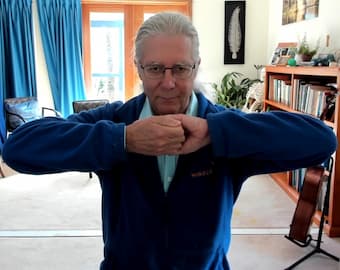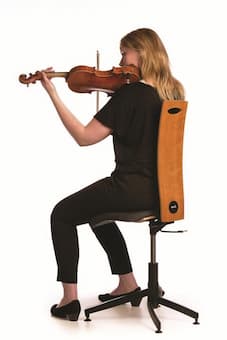This is the first of two articles, continuing our series from BodyMinded in Sydney1, addressing the relationship between too much tension, and too little.
Muscle activity is a part of everything we do. Coordinating your movement skilfully is essential in learning and performing music, so it makes sense that challenges in skill development and performance often lead to muscle tension related questions. These articles will introduce some fundamentals to answer questions on how much tension is enough; how to release or relax; and how to work with musical dynamics such as loudness, timbre and tempo in the context of whole-self coordination.
Some Basics
Muscles pull. When they pull the parts of the body move, unless there is resistance to movement, in which case the muscle work becomes tension. In physics “tension” refers to pulling on something to make it stretched or tight. In the body excess muscle tension is associated with stiffness, preventing ease of movement and interfering with the timing, sequencing, and rhythm of our playing.
We all have some idea of what too much tension looks like (stiff, jerky), what it may feel like (tense, uncomfortable, restricted), and its potential impact on both comfort and musical performance. What is not so clear is how to address it within the complex activities of playing or singing.
 Link the fingers of one hand to the other and pull in opposite directions. You will feel the muscle work, the pressure of opposing forces, but little or no movement occurs. Notice that the more you pull the more likely you are to notice tension in other parts of your body: your neck, your jaw, pulling a face or holding your breath. Tension tends to generalise to the whole self.
Link the fingers of one hand to the other and pull in opposite directions. You will feel the muscle work, the pressure of opposing forces, but little or no movement occurs. Notice that the more you pull the more likely you are to notice tension in other parts of your body: your neck, your jaw, pulling a face or holding your breath. Tension tends to generalise to the whole self.
Unnecessary tension does not have to feel uncomfortable. It may generate discomfort involving strain, struggle and/or effort, but for some this may be experienced as a positive sense of ‘working hard’ or even not register as a particular sensation at all. The feeling of working hard does not necessarily mean you are being effective; in fact it can mean the opposite.
Regardless of sensation, too much tension can be heard in a flattening of dynamic range and reduced sensitivity of control of the instrument (including the voice) and may lead to repetitive strain injuries.
Try this exercise: while playing your instrument, or drumming your fingers on a table or desk, deliberately hold your breath or pull a face. How about if you stiffen your legs while you move your fingers. How does that feel? What happens to your movement? Does it change again when you allow yourself to breath easily??
General Moveability
Overall movement freedom affects the specific movements involved in making music. Improvements in overall ‘moveability’ help create the background conditions for improvements in coordination and control in your singing and playing. Based on this, we can begin our experiments with the Goldilocks Principle2 as it applies to muscle tension:
“Allow everything to move that needs to move”
This is a simple reminder that all parts of you remain moveable as you play. Note this does not mean everything is actively moving to play, some parts play a supporting role, and move ‘passively’ or ‘automatically’; they adjust naturally, all you need to ensure is that they can.
One way to explore this with yourself and with your students is to conduct a moving tour of the whole body, to awaken the sense of moveability everywhere that movement can happen. With kids this can be the ‘wiggle warm-up’; with older people a tour of the joints and movements. For example, in the torso your spine is moveable (bendable) through its whole length, forward, backward, sideways, spirals; your head is moveably balanced over the spine, and the pelvis moves along with the rest of the torso. Head, spine and pelvis form a moving synergy as you play. All movement directions can be explored (within safe parameters for each person), noticing how moving the head moves the spine, moving the pelvis moves the spine, and moving the spine moves the head and pelvis, all together. What happens when you remember this ‘wiggle-ability’ as you play?
As you have seen, the solution to too much tension is moveability. This applies in an overall sense as well as to specific tensions, such as in the jaw, fingers, shoulder/neck or legs. When you start playing or singing, do you once again stiffen your torso? Hold your breath, or stiffen your legs? Using the activity above, observe how the specific tension you are concerned with responds to improvements in overall moveability.
Playing music is action. You cannot play well if there is insufficient muscle tone, that is, despite improvements often feeling ‘more relaxed’, asking for relaxation is not the answer! In our follow-up article we will look at how to deal with ‘over relaxation’ and ensure an appropriate level of muscle work in your singing and playing.
For more of the best in classical music, sign up to our E-Newsletter
1 See alexandertechnique.com.au/BodyMinded
2 Goldilocks Principle: Not too much, not too little



